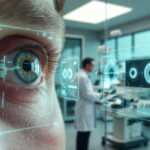Despite the fact that the rate of serious workplace accidents and injuries is decreasing with a heightened awareness of PPE and good health and safety practices, it’s still crucial for construction workers to stay safe on site. Construction has been identified by the HSE as the most dangerous sector in the UK, with 40 workers losing their lives due to fatal workplace accidents in the period 2019-2020. With site safety in mind, what are the most common injuries and health problems experienced by construction industry workers, and what can we do to prevent these?
Musculoskeletal Injuries
Because workers in the construction sector often perform repetitive and labour-intensive physical tasks, they’re more prone to back pain and sprains, strains and tearing of the ligaments and muscles. Over time, this can lead to musculoskeletal disorders including carpal tunnel syndrome, tendinitis, ‘carpet layers’ knee’, Raynaud’s syndrome, thoracic outlet syndrome and degenerative disc disease. Musculoskeletal injuries of the hand, arms, shoulders and neck may be worsened by failing to wear appropriate PPE such as proper work gloves when using manual tools and equipment. Ensure that you can access the necessary PPE – avoid excessive muscular strain and take a break when you need a rest.
Cuts and Lacerations
Many construction workers use heavy machinery and potentially dangerous raw materials, so it’s no surprise that cuts and lacerations are also common injuries in the sector. Any sharp object can cause a cut or laceration, which could be a potentially life-threatening injury – if you’re a business owner in the construction trade, conduct regular risk assessments to bolster the safety of your sites and reduce the chances of an accident. While it may seem like ‘just a scratch’, a sharp edge could lead to a fatality on site.
Sensory Issues
Construction workers are often exposed to loud noises, which can lead to hearing loss and deafness over time – for this reason, it’s essential that your crew have access to hearing protection when they’re working with heavy machinery or exposed to harmful noise. You must also ensure that your workers select the necessary eye protection to avoid eye damage caused by flying debris, dust and building materials.
Respiratory Disease
Workers in the construction trade may have a higher incidence of respiratory diseases such as silicosis and chronic obstructive pulmonary disease (COPD), which can cause breathing difficulties and damage the lungs. This is often due to inhaling hazardous substances such as chemicals, sawdust and construction dust.
Mental health
Male construction industry workers are more likely to suffer from mental health problems or commit suicide than those in other sectors. Promote well-being in your crew and don’t be afraid to talk about mental health.
Although the rate of accidents and injuries in the construction sector is still relatively high, employers and employees can significantly reduce their likelihood by sticking to health and safety guidelines, following training and making use of the necessary PPE, especially when carrying out potentially dangerous work.
Read Also
- Ketamine-Assisted Therapies: Impacts on Employee WellbeingWorkplace stress is common today. Many employees feel tired, anxious, or burned out. Regular therapy can help, but some people need more support. Ketamine-assisted therapy is showing good results for mental health. A ketamine-assisted therapist guides each session safely. This therapy can improve mood, focus, and energy. Learning more about it can help teams stay… Read more: Ketamine-Assisted Therapies: Impacts on Employee Wellbeing
- The Future of Men’s Health: Why Telehealth Is Here to StayTelehealth isn’t just a pandemic trend that faded into the background. For Australian men, it has become one of the most practical, time-saving, and stress-free ways to manage everyday health — and it’s shaping the future of how we access care. Platforms like DOCTO, an Australian online doctor and specialist telehealth service, are leading the… Read more: The Future of Men’s Health: Why Telehealth Is Here to Stay
- How to Build a Simple, Clean Skincare Routine ?You don’t need a complicated skincare routine. It doesn’t have to be something that requires twenty different products and confusing steps. Your routine works well with just a few high-quality clean ingredients. The beauty industry keeps pushing more products, but your skin actually needs less. You only need a simple approach to get better results… Read more: How to Build a Simple, Clean Skincare Routine ?
- How Preventive Dental Care Supports Overall HealthHave you ever wondered how a simple dental checkup could impact your entire body? Oral health is more than just a bright smile. Studies show that poor dental habits can contribute to serious health problems. Gum disease and tooth decay are linked to heart disease, diabetes, and infections. Yet, many people overlook preventive dental care.… Read more: How Preventive Dental Care Supports Overall Health
- Seeing Clearly in a High-Tech World: A Deep Dive into Advanced Vision Care ServicesProtecting your eyesight isn’t optional—it’s essential. Modern eye care has evolved far beyond basic exams, offering advanced diagnostics, personalized treatments, and surgical innovations that keep vision sharp for life. A leading example is Intermountain Eye Center, home to specialists like Dr Fishburn Boise, where patients receive comprehensive, high-level vision care designed to preserve long-term eye… Read more: Seeing Clearly in a High-Tech World: A Deep Dive into Advanced Vision Care Services






